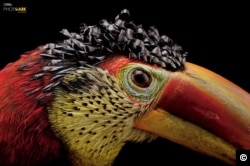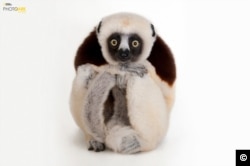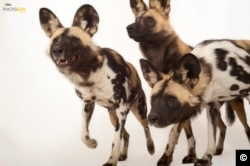Like Noah in the Bible, American photographer Joel Sartore is collecting animals to save them, but instead of placing them in an ark, he’s taking their pictures. The goal of his Photo Ark project, which is supported by the National Geographic Society, is to photograph some 12,000 animals that are vanishing because of hunting, habitat loss and climate change. Sartore started the project in 1995, and 11 years later, he has passed the half-way point in capturing images of his subjects.
In an email interview with VOA, the freelance nature photographer, who constantly travels, recalls it was a book about birds he got as a teenager that started him thinking about the animals in danger of disappearing. The story of a North American wild pigeon driven to extinction by hunting and habitat destruction especially had an impact on him.
Martha was “the very last passenger pigeon, in her cage at the Cincinnati Zoo in Ohio,” Sartore said. “She died in 1914, and the species went from billions to none. I couldn't get over that. Still can't.”
Over the years, Martha remained on the back of his mind.
“But I never dreamed I'd be meeting face to face with other species like frogs, birds and even rhinos that are down to the last of their kind,” he said. “But that's exactly what's happening now, and I feel like I've got to do something to turn things around, while there's still time to save species.”
Some he will never see again, like the last Columbia Basin pygmy rabbit, native to Washington State, which he photographed just before she died.
Sartore’s riveting photos show animals who appear to be staring at you and resemble humans posed in a photography studio against a stark white or black background.
“Most of these Photo Ark shoots last just a few minutes,” he says, “during which time I hope the animal glances back at me and makes eye contact. It doesn't always happen, but when it does, that's exactly the connection I'm hoping to make.”
Some are easier to photograph than others.
“Favorites are tortoises because they don't move much and so they're easy to focus on.” he explained. “Much less fun are mustelids [weasels, mink, ferrets, etc.] because they NEVER stop moving. They're curious, hyper and always looking for something new. They especially like to nose the front of my lens, which makes them even blurrier. They're having fun, but I'm not.”
A global photo safari for survival
From the project's humble beginnings at Sartore's local zoo in Lincoln, Nebraska, the photographer has now traveled to more than 40 countries for Photo Ark. He believes the animals most at risk are in Asia and Africa because of “rampant human overpopulation.”
Recently, while in the West African countries of Gabon and Cameroon, he saw “raging problems with habitat destruction from logging, farming and poaching due to overpopulation.”
In Cameroon, he searched for the Cross River gorilla and the goliath frog.
“Never saw the frog,” he said, “they had all been caught and eaten by local people and we saw just one of the gorillas, in a rehab center.”
He said the people are so hungry that they eat animals they normally wouldn’t.
“We also didn't see any birds bigger than a sparrow,” he explained. “They'd all been shot. People are now even killing and eating the bats there, which used to be taboo in many cultures. Hunger overwhelms the superstitious, it seems.”
Sartore hopes his photos will encourage people to take steps to save the animals, half of which, he predicts, could become extinct at the turn of the next century.
“I hope the public will finally stop and pay attention to the fact that we're all in this together,” he said. “There's still time to save the majority of species on the planet, but we must care, and act now. As other species go extinct, so could we.”
Sartore, who is 54, hopes he will be able to finish his project. If not, he has a backup plan – his eldest son, now 22, who helps him out on some shoots, has promised to continue his mission.




